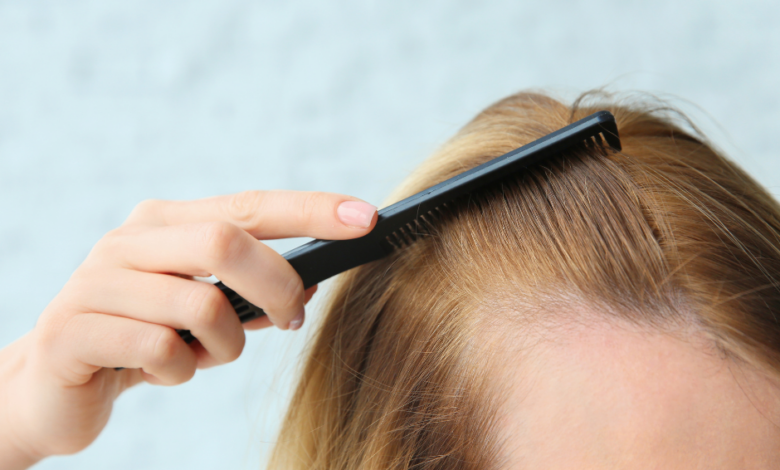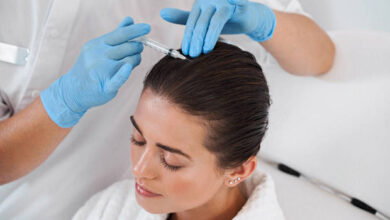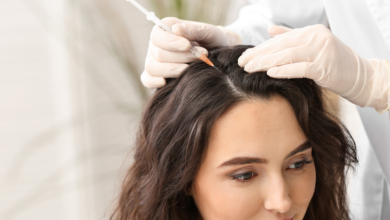
In this comprehensive article, you will gain expert advice and insightful information on the world of hair transplants. From the methodical process to the advanced technology used, every aspect of hair transplants will be explored. Through this A to Z guide, you will discover the latest innovations, learn about the various techniques available, and uncover the important considerations to make before undergoing the procedure. Whether you are someone who is considering a hair transplant or simply curious about the topic, this article will provide you with the knowledge you need to navigate this complex field effectively.
The Basics of Hair Transplants
What Is a Hair Transplant?
A hair transplant is a surgical procedure that involves moving hair follicles from one part of the body (called the donor area) to another part that is thinning or balding (called the recipient area). The purpose of a hair transplant is to restore hair growth and improve the overall appearance of the hair.
Types of Hair Transplants
There are several types of hair transplants available, including follicular unit transplantation (FUT), follicular unit extraction (FUE), direct hair implantation (DHI), and robotic hair transplants. Each method has its own unique advantages and disadvantages, and the choice of technique depends on several factors such as the extent of hair loss, the quality of the donor area, and the desired outcome.
Who Is a Good Candidate?
Not everyone is a suitable candidate for a hair transplant. Good candidates for the procedure are usually individuals who have sufficient hair follicles in the donor area, which is usually the back or sides of the scalp. Other factors to consider include the overall health of the individual, the cause of hair loss, and realistic expectations about the results of the procedure.
Choosing a Surgeon
Selecting the right surgeon for your hair transplant is crucial for a successful procedure and satisfactory results. It is important to choose a surgeon who is experienced, board-certified, and specializes in hair restoration. Additionally, researching the surgeon’s credentials, reading patient testimonials and reviews, and examining before and after photos can help in making an informed decision.
Preparation and Consultation
Preparing for a Hair Transplant
Before undergoing a hair transplant, there are certain steps to be taken to ensure a smooth and successful procedure. It is important to follow any pre-operative instructions provided by the surgeon, which may include avoiding certain medications, alcohol consumption, and smoking. It is also advised to arrange for transportation to and from the clinic on the day of the procedure.
Initial Consultation
During the initial consultation, the surgeon will evaluate the extent of hair loss, examine the donor area, and discuss the patient’s goals and expectations. This is an opportunity for the patient to ask any questions or express any concerns they may have regarding the procedure. The surgeon will also explain the different hair transplant techniques and recommend the most suitable option based on the individual’s unique characteristics.
Medical Tests
Prior to the hair transplant, the surgeon may order certain medical tests to assess the patient’s overall health and suitability for the procedure. These tests may include blood tests, scalp biopsy, or other diagnostic procedures. The results of these tests will help the surgeon determine the best course of action and minimize any potential risks or complications.
Discussing Expectations
During the consultation, it is important for the patient to have a realistic understanding of what can be achieved with a hair transplant. The surgeon will discuss the expected outcome, the number of grafts needed, and the timeline for hair growth. It is important to openly communicate with the surgeon and have a clear understanding of the limitations and possibilities of the procedure.

Hair Transplant Techniques
Follicular Unit Transplantation (FUT)
Follicular Unit Transplantation (FUT) is a hair transplant technique that involves removing a strip of scalp containing hair follicles from the donor area. The strip is then dissected into individual follicular units, which are then transplanted into the recipient area. FUT is known for its high success rate and ability to transplant a large number of grafts in a single session. However, it does leave a linear scar at the donor site.
Follicular Unit Extraction (FUE)
Follicular Unit Extraction (FUE) is a hair transplant technique that involves harvesting individual hair follicles directly from the donor area using a special instrument. The follicles are then transplanted into the recipient area. FUE is less invasive than FUT and does not leave a visible linear scar. It is suitable for individuals who prefer to wear their hair short or engage in activities that may expose the donor area.
Direct Hair Implantation (DHI)
Direct Hair Implantation (DHI) is a modified version of the FUE technique. The main difference is that DHI involves the use of a specialized implantation tool called a Choi pen, which allows for direct placement of the harvested follicles into the recipient area without the need for creating recipient sites beforehand. DHI offers precise control over the angle and direction of placement, resulting in a natural-looking hairline.
Robotic Hair Transplants
Robotic hair transplants are performed using advanced robotic systems that assist the surgeon in the extraction and placement of hair follicles. These systems use artificial intelligence and image-guided technology to identify and extract viable follicles, resulting in a highly precise and efficient procedure. Robotic hair transplants are particularly beneficial for individuals with advanced hair loss or those who require a large number of grafts.
Understanding the Procedure
Local Anesthesia
Hair transplant procedures are typically performed under local anesthesia, which means that only the area being operated on is numbed while the patient remains awake. This ensures that the patient does not experience any pain or discomfort during the procedure. Prior to administering the anesthesia, the surgeon will prepare the scalp by cleansing it and marking the areas for recipient sites or harvesting.
Harvesting Hair Follicles
In FUT, the surgeon will remove a strip of scalp from the donor area using a scalpel. The wound is then sutured, leaving a linear scar that can be concealed by surrounding hair. In FUE and DHI, individual hair follicles are harvested using a small punch-like instrument. The harvested follicles are then prepared for transplantation.
Creating Recipient Sites
Once the hair follicles have been harvested, the surgeon will create tiny incisions, known as recipient sites, in the recipient area. The placement and angle of these incisions are crucial to ensure a natural-looking result. The surgeon will carefully plan and design the hairline based on the patient’s facial features and desired outcome.
Graft Placement
After creating the recipient sites, the surgeon will begin placing the harvested hair follicles into these sites. This meticulous process requires precision and attention to detail to ensure optimal graft survival and a natural distribution of hair. The surgeon will carefully place the follicles in a way that mimics the natural growth pattern of the hair.
Recovery and Post-Transplant Care
Immediate Post-Transplant Care
After the hair transplant procedure, the patient will be provided with specific post-operative instructions to ensure proper healing and minimize any potential complications. These instructions may include guidelines on how to care for the treated area, medications to take, and any restrictions on physical activity or exposure to sun or water. It is important to follow these instructions closely to optimize the healing process.
Pain Management
Most patients experience minimal discomfort or pain after a hair transplant. However, some mild pain or soreness in the donor and recipient areas is normal. The surgeon may prescribe pain medication or recommend over-the-counter pain relievers to manage any discomfort. Applying cold compresses or taking short rests can also help alleviate pain or swelling.
Minimizing Swelling and Discomfort
Swelling is a common side effect after a hair transplant and usually subsides within a few days. To minimize swelling, the surgeon may recommend sleeping with the head elevated or using ice packs. It is important to avoid any activities or medications that can increase swelling, such as strenuous exercise or blood-thinning medications.
Follow-Up Appointments
Follow-up appointments are an essential part of the hair transplant process. These appointments allow the surgeon to assess the healing progress, monitor the growth of the transplanted hair, and address any concerns or questions the patient may have. It is important to attend these appointments as scheduled to ensure the best possible outcome and long-term satisfaction.
The Results and Long-Term Expectations
Natural Hair Growth Timeline
After a hair transplant, the transplanted hair follicles go through a natural growth cycle. Typically, the transplanted hairs will shed within the first few weeks after the procedure. This shedding is a normal part of the healing process and should not cause concern. New hair growth will gradually emerge from the transplanted follicles in the following months.
First Hair Shedding
The shedding of the transplanted hair within the first few weeks after the procedure is known as “shock loss.” This shedding occurs as a result of the trauma the hair follicles experienced during the transplantation process. It is important to note that this shedding is temporary and does not signify a failed hair transplant. The new hair growth will gradually replace the shed hair.
Growth of New Hair
The growth of new hair after a hair transplant varies from person to person. On average, patients can expect to see initial signs of new hair growth within 3 to 4 months after the procedure. However, the full results of a hair transplant may take up to 12 to 18 months to become fully visible. It is important to be patient and follow the post-operative care instructions during this time.
Final Result Assessment
The final result of a hair transplant can be assessed around 12 to 18 months after the procedure. At this point, the transplanted hair should have fully grown in, providing a natural and full appearance. It is important to keep in mind that hair transplants do not stop the natural aging process or prevent future hair loss. Additional treatments or maintenance may be required to maintain the desired aesthetic result.

Potential Risks and Complications
Infection and Bleeding
As with any surgical procedure, there is a risk of infection and bleeding after a hair transplant. It is important to follow the post-operative care instructions provided by the surgeon to minimize the risk of infection. In rare cases, excessive bleeding may occur, and immediate medical attention should be sought.
Scarring
All hair transplant techniques involve some degree of scarring. In FUT, the linear scar at the donor site can be concealed by surrounding hair. In FUE and DHI, multiple small scars may be left in the donor area, but they are usually less noticeable. The surgeon will take precautions to minimize scarring, and proper wound care during the recovery period can also contribute to scar reduction.
Numbness or Lack of Sensation
Some patients may experience temporary numbness or lack of sensation in the donor or recipient area after a hair transplant. This is typically due to trauma to the nerves during the procedure and usually resolves within a few weeks or months. In rare cases, persistent numbness may occur, and it is important to report any prolonged numbness to the surgeon.
Unfavorable Hair Growth Patterns
In some cases, the growth direction or angle of the transplanted hair follicles may not align with the natural hairline or existing hair. This can result in an unnatural or uneven appearance. Experienced surgeons take special care in designing the recipient sites and placing the grafts to ensure a natural-looking result. However, unfavorable hair growth patterns can occur, and they may require corrective measures such as additional graft placement or hairline adjustments.
Hair Transplants for Women
Hair Restoration Options for Women
Hair loss in women can have a significant impact on self-esteem and confidence. Fortunately, there are hair restoration options available specifically for women. These options include hair transplant procedures, scalp micropigmentation, low-level laser therapy, and medications such as minoxidil or finasteride. The choice of treatment depends on the underlying cause of hair loss, the extent of hair loss, and the individual’s preferences and goals.
Causes of Hair Loss in Women
Hair loss in women can be caused by various factors, including hormonal imbalances, nutritional deficiencies, certain medications, stress, and genetics. It is important to identify the underlying cause of hair loss to determine the most appropriate treatment option. Consulting with a hair restoration specialist can help diagnose the cause and develop a personalized treatment plan.
Hair Transplant Candidates
Not all women are suitable candidates for hair transplants. Good candidates for the procedure generally have stable donor areas and sufficient hair follicles available for transplantation. The surgeon will evaluate the patient’s scalp, medical history, and expectations to determine if a hair transplant is a suitable option. In some cases, alternative treatments may be recommended.
Treatment Considerations
When considering a hair transplant for women, it is important to have realistic expectations about the results and understand the limitations of the procedure. Women may require a lower number of grafts compared to men, as they typically have a smaller balding area. Hair transplants can provide significant improvements but may not completely restore hair density in certain cases. Consulting with a skilled hair restoration specialist can provide essential guidance in making informed decisions.

Alternative Hair Restoration Methods
Medications for Hair Loss
There are several medications available for treating hair loss, including minoxidil and finasteride. Minoxidil is a topical solution that is applied directly to the scalp to stimulate hair growth. Finasteride is an oral medication that helps prevent further hair loss by blocking the conversion of testosterone to dihydrotestosterone (DHT), which is responsible for hair thinning in certain individuals. These medications may be used alone or in combination with other treatments.
Platelet-Rich Plasma (PRP) Therapy
Platelet-Rich Plasma (PRP) therapy is a non-surgical treatment for hair loss that involves extracting a sample of the patient’s blood, processing it to concentrate the platelets, and injecting the platelet-rich plasma into the scalp. PRP contains growth factors that promote hair growth and stimulate the dormant hair follicles. Multiple sessions of PRP therapy may be recommended to achieve optimal results.
Microneedling
Microneedling is a minimally invasive procedure that involves using a device with tiny needles to create controlled micro-injuries in the scalp. These micro-injuries stimulate the production of collagen and promote the absorption of topical treatments such as minoxidil. Microneedling can help improve the effectiveness of hair loss medications and stimulate hair growth.
Low-Level Laser Therapy (LLLT)
Low-Level Laser Therapy (LLLT), also known as red light therapy, is a non-invasive treatment for hair loss that involves exposing the scalp to low levels of laser light. This stimulates cellular activity, increases blood flow to the hair follicles, and promotes hair growth. LLLT devices can be used at home or in a clinical setting and are effective for both men and women.
Choosing the Right Hair Transplant Clinic
Researching Clinic Credentials
When choosing a hair transplant clinic, it is essential to research the credentials of the clinic and its medical team. Look for a clinic that specializes in hair restoration and has board-certified surgeons with extensive experience in performing hair transplant procedures. It is also recommended to check if the clinic is accredited by reputable organizations in the field.
Examining Before and After Photos
Before and after photos provide valuable insights into the capabilities and results of the hair transplant clinic. Examine the photos carefully and look for patients with similar characteristics and goals to yours. Pay attention to the naturalness of the results and the overall improvement in hair density. It is also helpful to inquire if the photos represent the work of the surgeon who will be performing your procedure.
Reading Testimonials and Reviews
Reading testimonials and reviews from previous patients can give you an idea of the clinic’s reputation and patient satisfaction. Look for feedback on the surgeon’s skills, the professionalism of the staff, and the overall experience at the clinic. Keep in mind that no clinic or surgeon can achieve 100% satisfaction, but a majority of positive reviews is a good indication of a reputable clinic.
Meeting the Team
Before committing to a hair transplant clinic, it is recommended to schedule a consultation or visit the clinic in person. This allows you to meet the medical team, ask any questions you may have, and assess the clinic’s facilities and environment. Building a rapport with the surgeon and feeling comfortable with the clinic’s approach and communication style are important factors in ensuring a positive experience and desirable results.
In conclusion, hair transplants offer a viable solution for individuals experiencing hair loss or thinning. By understanding the basics of hair transplants, the different techniques available, and the potential risks and complications, individuals can make informed decisions about pursuing a hair transplant procedure. It is important to choose a skilled and experienced surgeon, follow pre-operative and post-operative instructions, and have realistic expectations about the final results.
Additionally, exploring alternative hair restoration methods and considering the specific needs of women with hair loss can provide comprehensive options for individuals seeking to improve their hair density and overall appearance. By choosing the right hair transplant clinic, conducting thorough research, and consulting with a reputable hair restoration specialist, individuals can embark on their hair restoration journey with confidence.




